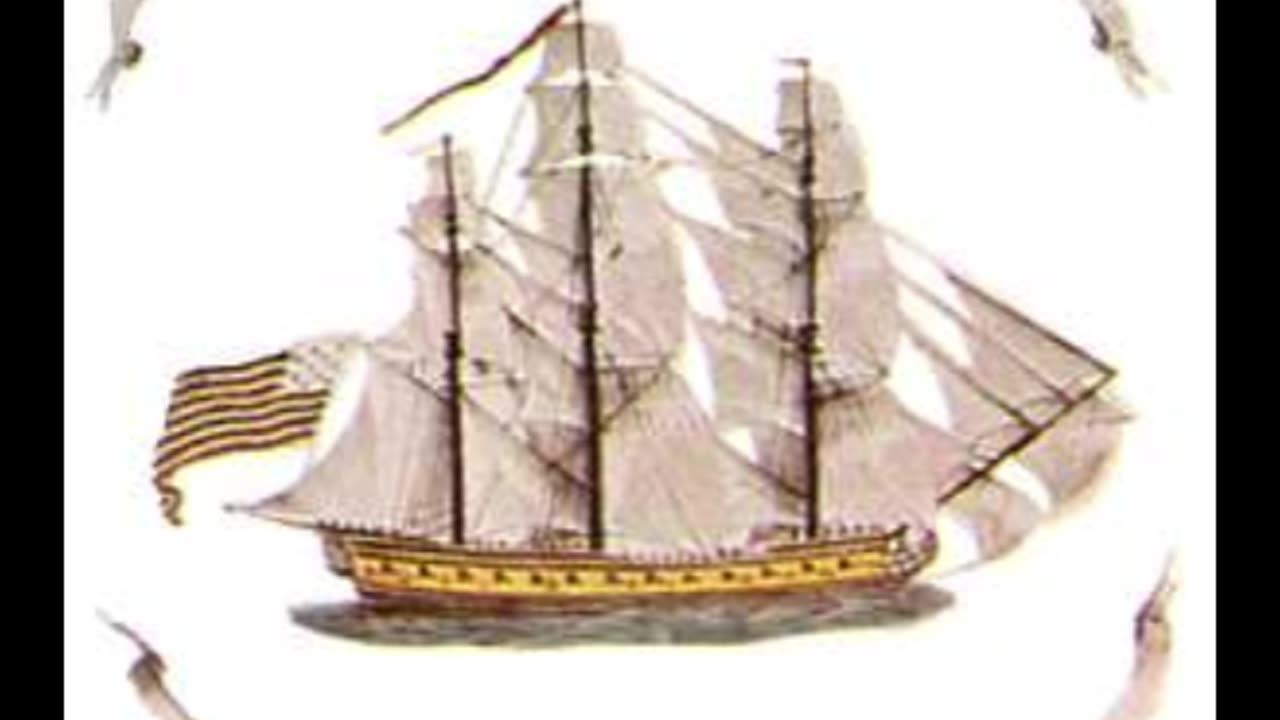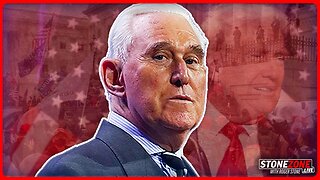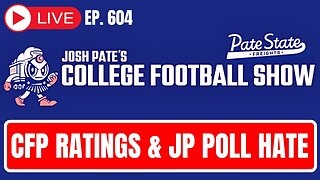Premium Only Content

American Diplomatic Interest in Burma-Pacific Historical Review in 1939
Timeline of Main Events:
1780s-1790s: Elias Hasket Derby's ships sail to various ports in Asia, including Calcutta, Rangoon, Bangkok, Manila, and Colombo. These were the first American ships to engage in trade with these regions, carrying goods like cotton from Bombay to China.
1792: The American ship Hercules, captained by Carpenter, records significant profits from trade between Burma and other ports on the Bay of Bengal.
1793: Derby's ship Astrea travels from Madras to Pegu, Burma. The Burmese King, Bodawpaya, commandeers the ship for military transport during his invasion of Siam.
1805: John B. Davy of Pennsylvania visits Ava, Burma for trade.
1809: The East India Company sends Captain John Canning to Ava as an envoy.
1810:John B. Davy returns to Burma, claiming to be appointed as American Agent to the Burmese King.
Official U.S. records show John B. Davy appointed as Consul at Rangoon on May 2nd. However, he mostly operates from Calcutta.
1811: The U.S. Senate confirms Davy's appointment as Consul on January 12th. No consulate is actually established in Rangoon until much later.
1812: By February, Captain Canning reports no sign of Davy's presence or activities in Burma.
1813: Dr. and Mrs. Adoniram Judson become the first Americans to settle permanently in Burma, arriving in Rangoon. They play a role in the first Anglo-Burmese War.
1853-1878: Reign of King Mindon Min, considered the most astute Burmese ruler in handling foreign relations. He maintains good relations with British India while seeking recognition of Burmese independence from other powers.
1855:September: Dr. Eugenio Kincaid, an American missionary residing in Moulmein, receives an invitation from King Mindon to visit Amarapura.
March: Kincaid and Dr. Dawson, another missionary, travel to Amarapura and meet with King Mindon. The King inquires about America and requests them to promote trade with Burma through American newspapers.
1856:February: King Mindon sends an embassy to France.
April: Kincaid agrees to travel to America as an envoy of the Burmese King to negotiate a commercial treaty.
1857:February 18th: Kincaid arrives in New York.
March: Kincaid presents King Mindon's official letter to President Buchanan and the Secretary of State. He also relays the King's wish for a small steam engine, similar to one gifted to Japan by the U.S.
September 5th: Kincaid leaves for Burma, carrying President Buchanan's reply, books, newspapers, and government publications as gifts for King Mindon.
October 20th: Kincaid departs from Southampton on the ship Indus, traveling with Lord Dalhousie.
1858:January: Kincaid arrives back in Rangoon and spends several weeks in Rangoon and Prome, engaging with fellow Americans.
March 20th: Kincaid and Dawson meet with King Mindon in Mandalay. The King expresses his desire for an American consul in Mandalay and offers land for a mission house.
1872: King Mindon sends an embassy to Europe. The embassy secretary later acknowledges receiving "papers used in diplomacy" from the American representative, General Schencke.
1873: March 5th: The American legation in London sends a dispatch referencing Burma, highlighting the Burmese embassy's use of American diplomatic documents as models. The dispatch also points out the British government's control over Burma's foreign relations.
1875:March 31st: The American Minister to China, Avery, sends a dispatch from Peking regarding the murder of Margary in Yunnan, near the Burmese border.
April: Avery sends another dispatch mentioning an armed Burmese escort in relation to the Margary affair.
June: Avery sends a third dispatch on the Margary case, noting the expectation that Britain will soon annex all of Burma.
1878: King Mindon Min dies.
1879: Britain withdraws its Resident from Mandalay and closes the Residency due to escalating tensions with Burma.
1882:November 17th: General Halderman, the American Minister-Resident in Bangkok, reports on the escalating conflict between Britain and Burma. He predicts a British takeover of Burma.
Hkun Saing, Sawbwa of Hsipaw and rival to the Burmese throne, flees to Siam and later Rangoon.
Later: A court in Albany, New York, denies the naturalization petition of Dr. San C. Po, a Burmese physician, reinforcing the legal view that Asia, for the purpose of U.S. naturalization laws, begins at the borders of Iran.
Cast of Characters:
Elias Hasket Derby: An American merchant and ship owner from Salem, Massachusetts. He was a pioneer in American trade with Asia, his ships being the first from the newly formed nation to sail to several ports in India and Southeast Asia.
Captain Carpenter: Captain of the American ship Hercules. He achieved commercial success by engaging in trade between Burma and ports on the Bay of Bengal in the late 18th century.
King Bodawpaya (1781-1819): The sixth king of the Konbaung dynasty of Burma. Known for his military campaigns and expansion of the Burmese empire. He temporarily requisitioned the American ship Astrea for his invasion of Siam.
Major Samuel Shaw: The first American consul in Canton, China. He traveled extensively in Asia, including a visit to the Nicobar Islands near Burma.
John B. Davy: An American trader who claimed to be appointed as an agent to the Burmese King. While records show his appointment as Consul to Rangoon in 1810, his actual activities in Burma remain unclear.
Captain John Canning: An envoy sent by the East India Company to the Burmese court in Ava in 1809. He reported on John B. Davy's activities and the growing American presence in the region.
Dr. & Mrs. Adoniram Judson: American Baptist missionaries who became the first Americans to permanently settle in Burma. They arrived in Rangoon in 1813 and were active during a turbulent period in Burmese history, including the first Anglo-Burmese War.
King Mindon Min (1853-1878): The penultimate king of the Konbaung dynasty, known for his diplomatic skills and efforts to modernize Burma. He sought to establish direct diplomatic relations with the United States and other Western powers.
Dr. Eugenio Kincaid: An American Baptist missionary who became an intermediary between King Mindon and the United States government. He traveled to America as King Mindon's envoy to establish a commercial treaty and secure recognition of Burma's independence.
Dr. Dawson: A medical missionary who accompanied Dr. Kincaid on his mission to the Burmese court. He later joined Kincaid on his journey back to Amarapura to deliver President Buchanan's reply.
President James Buchanan: The 15th president of the United States. He received King Mindon's letter and gifts from Dr. Kincaid, responding with a formal letter and gifts for the Burmese king.
Lord Dalhousie: The Governor-General of India from 1848 to 1856. Known for his expansionist policies and the annexation of several Indian states. He traveled alongside Kincaid on the ship Indus.
Dr. Mason: An American missionary in Burma who offered to raise a Karen Christian battalion to support the British during the Indian Mutiny.
General Robert Schenck: The United States Minister to Great Britain during the 1870s. He reported on Burma's efforts to secure recognition of its independence and its use of American diplomatic documents as models.
Augustus Raymond Margary: A British diplomat who was murdered in Yunnan, China, near the Burmese border in 1875. His death escalated tensions between Britain and China.
George B. Avery: The United States Minister to China in the mid-1870s. He provided valuable insights into the British annexation of Burma and its implications for the region.
Thomas Francis Wade: The British Minister to China during the 1870s. He played a crucial role in the aftermath of the Margary Affair.
General Benjamin F. Halderman: The United States Minister-Resident in Bangkok in the early 1880s. He accurately predicted the British annexation of Upper Burma.
King Thibaw Min (1878-1885): The last king of the Konbaung dynasty. His reign was marked by internal strife and increasing British pressure, ultimately leading to the annexation of Upper Burma.
Hkun Saing, Sawbwa of Hsipaw: A Burmese prince and rival claimant to the throne. He fled Burma for Siam and later Rangoon to escape King Thibaw.
Dr. San C. Po: A Burmese physician who was denied naturalization in the United States. His case highlighted the complexities of U.S. naturalization laws and how they applied to individuals from Southeast Asia.
This detailed timeline and character list offer a comprehensive overview of American interaction with Burma, revealing a complex relationship shaped by trade, missionary activity, and the shifting political landscape of 19th-century Southeast Asia.
-
 DVR
DVR
Side Scrollers Podcast
7 hours agoThe Real Game Awards: Official Live Stream
9.8K2 -
 LIVE
LIVE
The StoneZONE with Roger Stone
59 minutes agoJanuary 6 Victim Jeremy Brown Still in Jail Despite Trump Pardon | The StoneZONE w/ Roger Stone
1,412 watching -
 LIVE
LIVE
megimu32
2 hours agoON THE SUBJECT: Make 90s Movies Great Again
491 watching -
 LIVE
LIVE
Precision Rifle Network
1 day agoS4E3 Guns & Grub - Trump a new era for gun rights?
44 watching -
 1:05:31
1:05:31
Glenn Greenwald
4 hours agoSection 702 Warrantless Surveillance Ruled Unconstitutional: Press Freedom Advocate Seth Stern Explains; The Rise of Unions & the Impact of Trump's Populism with Author Eric Blanc | SYSTEM UPDATE #395
45.9K54 -
 LIVE
LIVE
The Amber May Show
2 hours agoWomen Of Rumble | Amber, Kelly and Wendy Wild
266 watching -
 DVR
DVR
Josh Pate's College Football Show
4 hours ago $0.32 earnedCFP Title Viewership | JP Poll Under Attack | Bama & Oregon Season Grades | Most To Prove In 2025?
12.5K -
 LIVE
LIVE
VOPUSARADIO
8 hours agoPOLITI-SHOCK! "THE TIDE IS TURNING"! 3 SPECIAL GUESTS JOINING US TONIGHT!
97 watching -
 52:47
52:47
Kimberly Guilfoyle
6 hours agoDismantling DEI Once and For All, Live with Tyler O’Neil & Eric Deters | Ep.190
76.5K28 -
 1:34:59
1:34:59
Redacted News
5 hours agoBREAKING! TRUMP SIGNS ORDER TO RELEASE JFK FILES, CIA IS FURIOUS | REDACTED NEWS
176K316